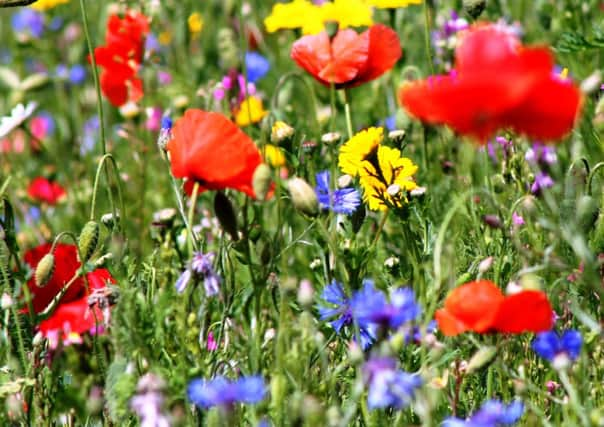A fitting memorial


This year is a very special year for one of the brightest and bountiful of flowers – the poppy. For 2014 marks the centenary of the start of the First World War, and the poppy is a reminder of the hell of those battlefields where millions lost their lives.
The poppy is also a vivid reminder of a countryside before chemicals became the accepted way of dealing with weeds.
Two forms of warfare – one vivid red little flower.
Advertisement
Hide AdAdvertisement
Hide AdThankfully, the world is unlikely to ever again see carnage on the scale of the Somme or Ypres, and some sections of the agricultural industry have seen sense and begun to let nature rather than herbicides have more of a say in what grows where.
Which is good news for many flowers (and birds and insects) and certainly good news for the poppy, which is easy to grow, easy to please and easy to propagate. In the wild, they are a joy to behold; in the garden, they can make a short-lived but lasting impact; they seem to pulse with colour and are able to put on a superb show year in, year out.
Annual poppies are simple to grow; scatter their tiny black seeds where you want them to flower (perhaps as part of a wildflower mix). They don’t need rich soil, although they do love the sun. Sow in April and thin out seedlings as they appear. The flowers that are left to grow will eventually be held aloft on seemingly-fragile stems, but they bend with the wind. Dead-head and you’ll encourage more blooms.
The big red poppy everyone seems to know is P rhoeas, the native corn poppy. It still plays a big part in town and country but it has been tinkered with to also produce white, pink and even bi-coloured blooms.
Advertisement
Hide AdAdvertisement
Hide AdFor some gardeners, even these are not good enough, and they prefer to grow P somniferum, the opium poppy. At the other end of the scale is P alpinum, the dainty Alpine poppy, whose orange, yellow or white blooms grow mere inches from the ground.
There are other poppies available, but it is still the remembrance poppy (Papaver rhoeas), inspired by the poem, In Flanders Fields, which captivates. It’s a fitting memorial for those lost millions.